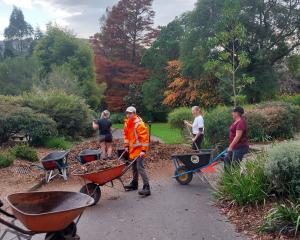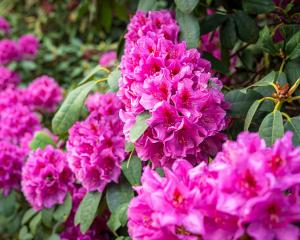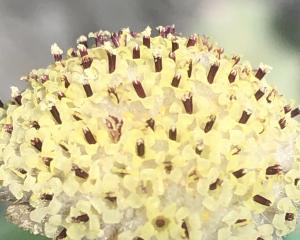With the vege gardening revolution taking place, compost heaps are the new status symbol.
Creating a compost zone close to where the finished "black gold" is going to be used makes your life so much easier. No use having it down the bottom of the garden far in the depths of never-never land to be forgotten. It needs to be close and it needs to be ... dare I say it, "sexy".
A tidy quarter-acre town section might suit untreated pine or macrocarpa timber. Out in the backblocks of Hawea Flat, I'll often use straw bales.
Wooden pallets, corrugated iron or bricks are cheap second-hand materials, or you can splash out on new plastic tumblers or black compost bins. It's all about what makes it easy, and "sexy", for you.
The type of composting we are embarking on here is "hot composting". To generate heat, the whole compost heap is layered up at the same time.
Cold composting follows the same principles, but the layers are added over weeks or months.
Composting ingredients can be divided into two categories.
In the green corner, we have "nitrogen-rich" ingredients, such as fresh lawn clippings, food scraps, weeds, animal manure, comfrey, yarrow, blood and bone, and in the brown corner we have "carbon-rich" ingredients, such as dry garden or grass clippings, straw, wood chips, paper, cardboard, toetoe heads.
When we make our hot compost cake, we bring these carbon and nitrogen ingredients together in fairly equal parts, mix, add some water and bake.
The heap needs to be at least a metre cubed. You'll know the magic is working when it gets so hot you can't put your pinkies in.
Alternate 10cm to 15cm layers of carbon materials with nitrogen materials. Vary your layers, e.g. start with straw then fresh grass, add shredded cardboard then food scraps, next dry grass then horse manure. Sprinkle water as you go.
Your compost heap will benefit from turning it several times, but if time is not on your side turn the heap once or not at all. Covering your heap with an old tarp, carpet, black plastic or roofing iron offers protection from heavy rain and also stops the moisture from evaporating during the summer.
The compost is ready when it's hard to see what the original ingredients were and you have a "black crumbly rich earth-like substance, which smells damp and fertile, like a forest floor".
Crib owners, non-gardeners and very busy people might not have the quantities of materials to compost, or the time or space to set up a hot compost heap. What might excite you is a clever system called the Green Cone, which deals with your food scraps day by day in an almost fool-proof way.
The only real work with a Green Cone is the initial digging of the interior basket into the ground. A little bit of care needs to be taken here as the basket needs to be in "light soil". If you're blessed with clay or hard soil, you need to dig up a larger area, then surround the basket with sand or gravelly soil mix.
Once the cone is positioned to get maximum sun, it's as simple as collecting your daily food scraps and putting them in the cone. Put everything in; meat, fish bones, the lot. Every now and again you add some magic dust (a safe biological additive that aids the composting process).
The cone level fills and drops, fills and drops as the composted materials seep out into the surrounding soils.
When placed in a vege garden or flower bed, the surrounding vegetation goes off - think triffid-like growth.
There is no finished product you dig up and use around the garden; everything is dissipated in the immediate zone around the cone.
Green Cones don't come cheap but, to my mind, there is no easier composting solution.
Want to know more?
If you want to know more about easy composting systems, go to one of Dr Compost's workshops or visit the Wanaka Wastebusters website, www.wanakawastebusters.co.nz
Wanaka Get Composting Workshop, Thursday, November 1, 12.30pm-2.30pm, Wanaka QLDC office, 47 Ardmore St, Wanaka.
Queenstown Get Composting Workshop, Thursday, November 8, 12.30pm-2.30pm, QLDC office, 10 Gorge Rd, Queenstown.
Troubleshooting
My compost doesn't heat up
Too dry? Add water. Layers should be damp like a wrung-out sponge.
Too wet? Open the centre of the heap up and allow some evaporation.
My compost isn't breaking down
Too much carbon? Add a manure slurry or rebuild, adding more nitrogen (fresh grass, food scraps, manure).
Not enough oxygen?Turn to aerate.
My compost is smelly
Too much nitrogen? Mix in some carbon (straw, shredded paper).
Aaahhhh! Rats!
Trap or safely poison them. You can rat-proof plastic compost bins with some fine mesh placed under the bin.
Swarms of tiny black flies
Try covering the heap well; build a basic beer trap; aerate your compost heap. Otherwise learn to love them; these fellas are helping the compost process.











